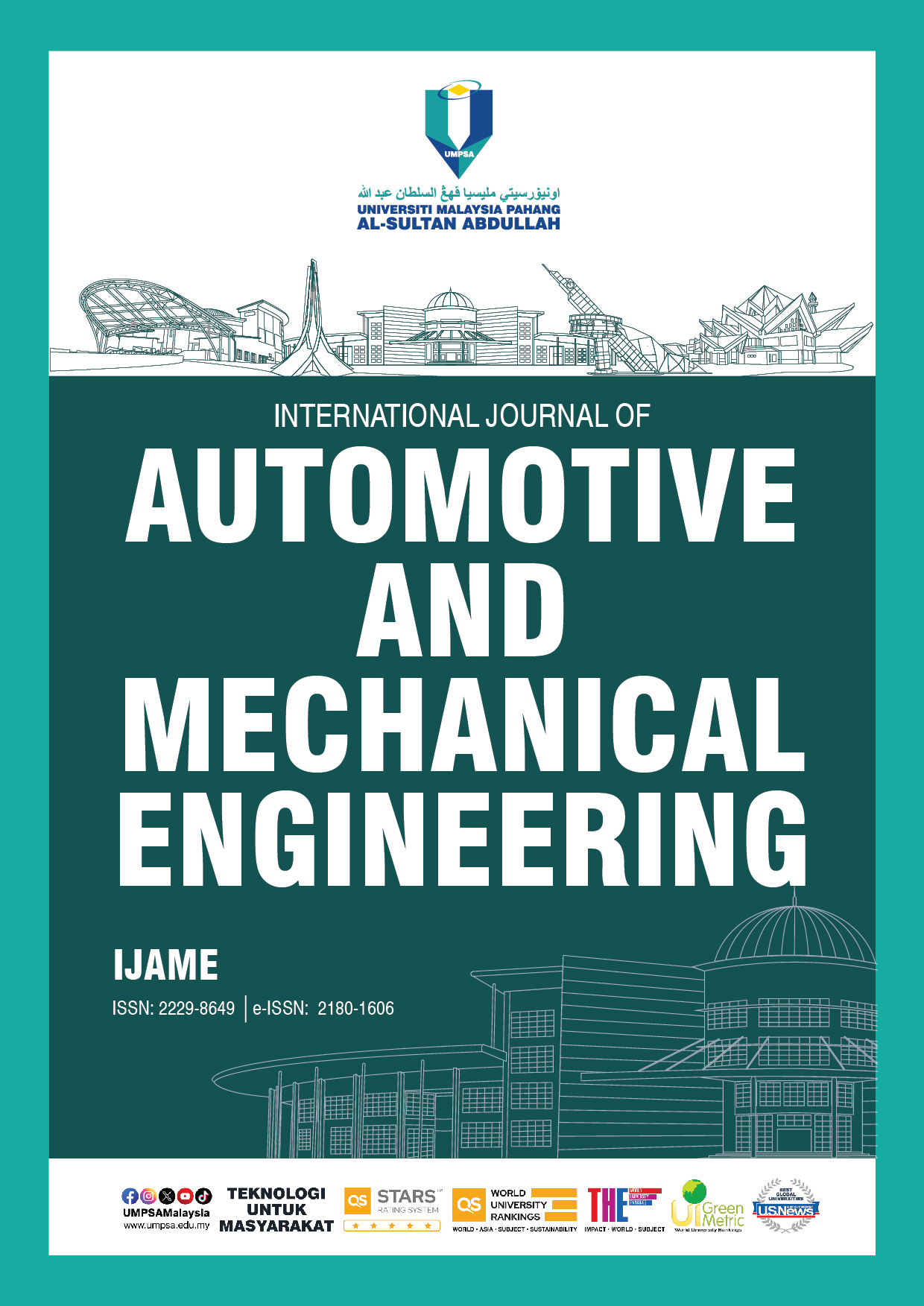Investigation of Brake Pad Wear Impact on Autonomous Emergency Braking Pedestrian Performance on Wet Road Conditions
DOI:
https://doi.org/10.15282/ijame.21.2.2024.18.0881Keywords:
Brake pad wear, Autonomous emergency braking pedestrian, Vehicle conditional artificial potential field, Vehicle safety, Brake performanceAbstract
This study presents an investigation of autonomous emergency braking pedestrian (AEB-P) system performance during harsh braking on wet road pavement. The system was designed to consider a pedestrian walking in front of the host vehicle. The performance of the AEB-P system would degrade immediately as the pads on the brakes become worn, and the vehicle continues to brake on a wet road surface. The vehicle conditional artificial potential field (VC-APF) is an innovative approach for motion planning in the AEB-P introduced in this work. The simulation was performed to explore the impact of brake pad degradation on VC-APF effectiveness on wet road pavement. The first evaluation involved a test to evaluate the effectiveness of the risk assessment in the AEB-P system when encountering a moving obstacle (pedestrian). The second test evaluated VC-APF performance, for instance, the vehicle's safety distance when the vehicle performed hard braking at 0.4, 0.35, and 0.24 brake pad friction coefficients. The third evaluation focused on the vehicle’s speed behavior during deceleration at various brake pad friction coefficients. The simulation results showed that while braking at 0.4 and 0.35 brake pad friction coefficients, the vehicle maintained a minimum safety distance of 1.5 m and 0.69 m from a pedestrian on wet road pavement, respectively. However, the brake pad friction coefficient of 0.24 failed to prevent the vehicle from crashing. The findings indicate that an exhausted brake pad reduces the vehicle's safety.
Downloads
Published
Issue
Section
License
Copyright (c) 2024 The Author(s)

This work is licensed under a Creative Commons Attribution-NonCommercial 4.0 International License.







